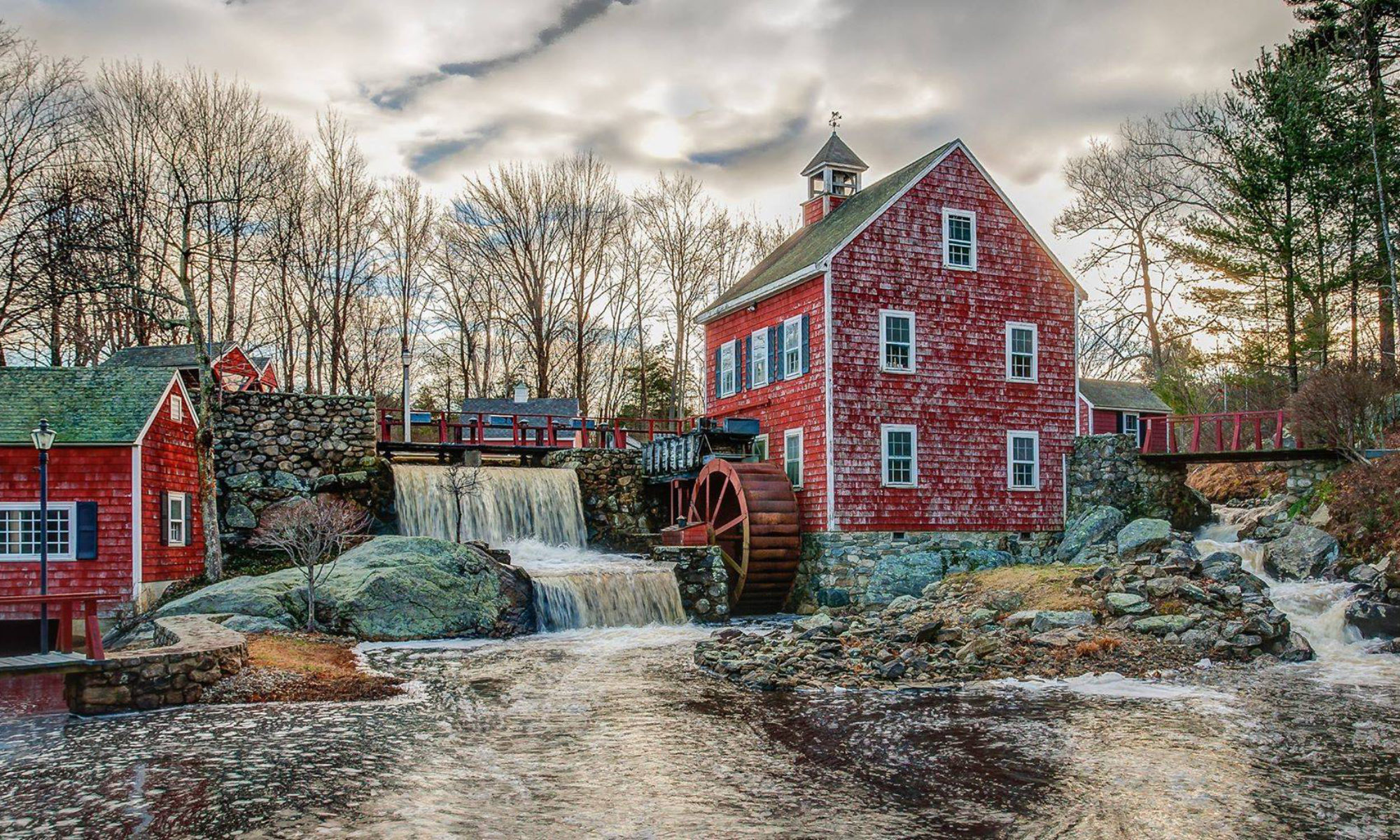From Lowell Sun January 10, 1982

CHELMSFORD — A water wheel will soon be turning again at the site of Chelmsford’s first mill — this time producing electricity.
Lloyd Greene, owner of the mill site, dam, and water rights to Russells’ Mills Pond, hopes to have an overshot waterwheel generating electricity for his own home this year, realizing a 20-year dream.
Greene bought the mill site in April 1954 after an exhaustive search of eastern Massachusetts. “This was no accident,” says 64 year-old Greene. “I searched for the perfect place and found it.”
After clearing the site, which Greene says “looked like the wrath of God when I bought it,” work began on what is now called “The Millstream,” a complex of six buildings around the historic dam which were designed and largely built by Greene.
Serious design work on the “micro hydroelectric” plant began in March last year. Most recently the masonry “wheel pit,” which will old the water wheel, was completed
Some 600 cubic feet per minute of water will be led from the central spillway via a still-to-be-built heavy wooden flume to the top of the wheel, which will be 12 feet in diameter, with a four foot “face” or width.
The wheel, made entirely of steel, will turn a shaft 12 feet long and five-and-a-half inches in diameter.
The shaft will terminate inside the millhouse with a 1,720-pound, 51/2-foot diameter master gear. “It’s the biggest gear in Chelmsford,” says Greene. “I guarantee it.”
After going through a gear box and pulleys and belts to the generator, the 944 revolutions per minute of the water wheel and master gear will be converted to a speed of some 1,500 revolutions per minute. That means between eight and 10 kilowatts under average conditions.
The power will be used in the six Millstream buildings. After “unit two” — a 10 to 12 kilowatt turbine now in the planning stages — is operational in 1985, power will be sold to the Merrimac Education Center, housed in the 1816 millowner’s house sold by Greene. Any power remaining will be purchased by public utilites.
Finding parts for the mill hasn’t been easy, according to Greene.
Components have been specially ordered adapted to new uses for the mill. “The companies that used to make this type of equipment have all gone out of business many years ago,” he says.
Although Greene intends to open The Millstream to the public (charging admission). strict historical authenticity is not his primary concern. “To me, that doesn’t mean anything,” he says. “What means something to me is that I’m living and working where people did 300 years ago.”

The mill site, water rights, and 450 acres were first granted on “July day ye third, 1656,” by a “king’s grant,” according to Greene. The owner was Samuel Adams, one of Chelmsford’s first and most prominent citizens, and a member of the family which later produced two American presidents. The milldam was serving grist and wood mills until shortly after World War II.
Although the original mill-house is long since gone, “a good part” of the present dam is the original, according to Greene.
The Millstream is only one aspect of Greene’s inventiveness.
The L. Charlton Greene Manufacturing, producers of record players for schools and libraries, was started by Greene after his release from the army in World War II, in which he was an ordinance officer.
Greene attributes much of his abilities to the influence of his father, an inventor and “radio pioneer,” who held several patents on radios which were produced under his name. His father also worked for many years as the radio editor for a Boston newspaper.
“I was born and brought up in it,” he says. “Instead of playing with building blocks, I played with my father’s discarded radio parts.”
Greene praises others who have assisted him on the project, including stonemason Fred Johnson — “just about the finest stone and granite mason around,” according to Greene. Students at Nashoba Valley Technical High School have also assisted.
For all his work, Greene doesn’t expect to make a profit on the mill. “I just want to have some fun,” he says.
